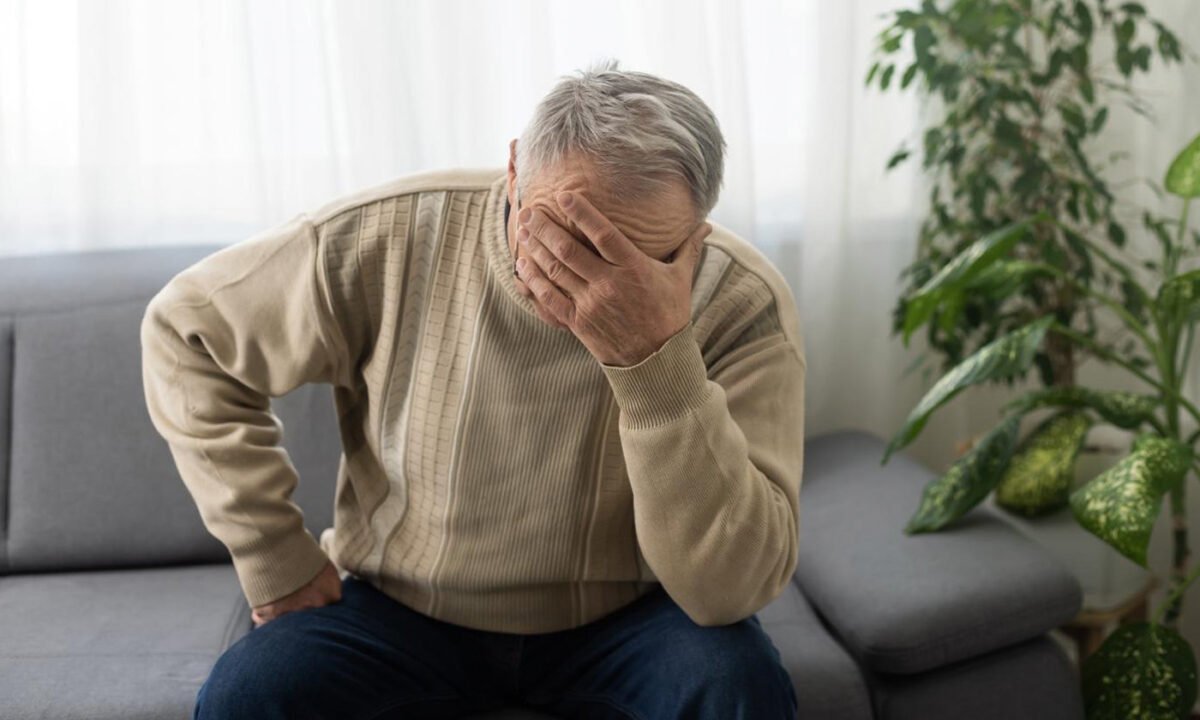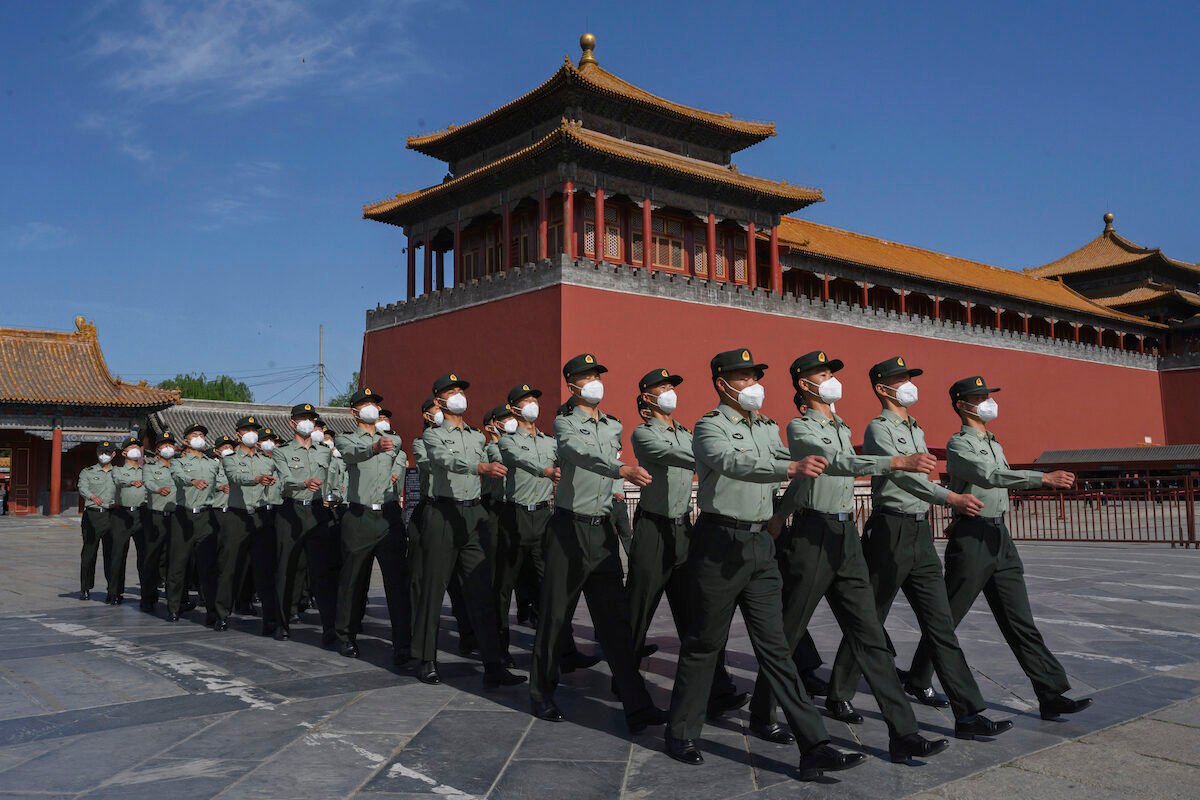4 Types of Migraine, Tips for Relief, and When to Seek Help
Migraine headaches can interrupt the flow of daily life to the point of dysfunction and even despair—without a one-size-fits-all remedy, knowing the type and cause of yours may be helpful.
Migraines are a specific type of headache characterized by recurrent attacks of moderate to severe head pain. The pain is often described as pulsating or throbbing and typically affects one side of the head. Migraines are often accompanied by other symptoms such as nausea, vomiting, and sensitivity to light and sound.
How can we distinguish between a simple migraine and one caused by other diseases? Rong Shu, a senior traditional Chinese medicine (TCM) physician in the UK, offers some tips on understanding migraine from a TCM perspective, and how to relieve or respond to the different types.
TCM Identifies 4 Types of Migraine
In TCM, qi (vital energy), blood, essence, and body fluids are essential substances for all physiological activities of life. They originate from the internal organs and flow continuously inside the body. So, ensuring these essential substances are abundant and circulating properly throughout the body is paramount for good health. The occurrence of diseases or other complications is likely the result of either stagnation or deficiency of these substances.
Shu said that TCM believes “pain results from no flow.” If there is pain, it means that the qi and blood are blocked. Most migraines are caused by liver and kidney yin deficiency or menstrual blood deficiency combined with wind-cold and dampness—causing qi stagnation—meaning the qi of the internal organs and meridians is blocked, thus causing pain. In clinical terms, migraine can be divided into four distinct types.
1. Liver depression and qi stagnation type
This type of migraine primarily occurs with the obstruction of the liver meridian, which is caused by factors such as depression or lovelorn, coupled with the invasion of coldness, dampness, and other external pathogens, making one more susceptible to migraines.
Shu gave a few examples. One of his young female patients went hiking with her boyfriend one night and they had an argument. She became angry and sat on a rock for quite a while. Unaware of the evening gusts and with her menstrual period at the same time, she developed a migraine on the side of her head that was facing the wind. Long after the outing, the symptoms continued to strike whenever the weather turned cold. This is a typical type of liver depression and qi stagnation—a depressed mood leads to liver depression, coupled with the invasion of external pathogens.
The second example is of another female patient who went to bed every night with wet hair after bathing and suffered from severe migraines for four years. This type of patient shows a unique characteristic—when you press on the scalp, it is soft—indicating that the space between the scalp and the skull contains dampness.
Shu explained that when a person sleeps, the yang energy resides inside the internal organs, and the body’s surface will become deprived of it. The yang energy is used to resist wind, cold, and dampness. If the hair is not dried completely, moisture will enter the body, and the accumulation of it inside the body is difficult to get rid of.
A third and more broad example is of students during their final college exam periods, during which time their bodies consume a lot of energy to cope with high demands and can become relatively frail. In addition, the stress of final exams can make students sweat profusely, fully opening their pores. If the weather is windy and rainy or both, the wind and dampness are likely to invade the body, triggering migraines.
In TCM theory, under normal circumstances, “wind, cold, heat, dampness, dryness, and fire” are six natural climatic factors, called the “six qi.” Normal operation and changes of the six qi are beneficial to the growth and changes of all things. However, if these are either excessive or insufficient, and when the body’s immunity is low, each could become a pathogenic factor instead—then called the “six evils”—namely wind evil, cold evil, heat evil, dampness evil, dryness evil, and fire evil.
2. Hyperactivity of liver yang type
This type occurs mostly in middle-aged and older people. In this case, the energy of the liver meridian rushes to the top of the head and stays there without receding. In normal circulation, the energy that goes up to the top of the head will come down later, but for elderly or overworked people, due to insufficient yin qi and deficiency of kidney essence, the energy to guide the qi back down will cause a backlog of pressure on the head—leading to headaches. Many such cases will be accompanied by sore eyes, and severe cases may also have symptoms of nausea, photophobia, and sensitivity to noise.
3. Phlegm-damp stasis type
Phlegm dampness in TCM refers to the imbalance of qi, blood, and body fluids inside the body, resulting in abnormal accumulation of body fluids, often manifested as obesity, abdominal fat, and easy drowsiness. This type of person usually has poor blood and meridian circulation due to obesity. Overeating is also a factor that contributes to the accumulation of too much moisture in the body, thus causing migraines.
4. Viscera dysfunctional type
Visceral dysfunction means that the function of the whole viscera (internal organs in the main cavities of the body) is weak. This type of migraine is easily affected by diet and fatigue. Shu had a patient who suffered from migraines for decades—but they eventually stopped. However, after an infection with COVID-19 and a decline in her physical condition, her migraines returned.
Typing Migraines by Location and Symptoms
The location and symptoms of a migraine can be used to preliminarily judge which type of migraine it is.
1. Ever-changing location type
Migraines that belong to the cold evil type are caused by cold wind and moisture. Because such “cold evils” can travel inside the body, migraines may occur in different parts of the head. Treatment of this type will target ridding wind-cold and dampness.
2. Sore eyes type
Sore eyes are a type of migraine with hyperactivity of liver yang, which means that the energy of the liver meridian is not traversing smoothly. TCM says that “the liver finds its way to the eyes.” If the liver function is weak, the eyes will be prone to complications. To treat this, it is necessary to soothe the liver and regulate qi, so that the liver qi can flow up and down unimpeded.
3. Noise type
Continuous, excessive noise, such as that in industrial workplaces, can also cause migraines that cause hypersensitivity to noise. The headache usually starts on one side of the ear and then spreads to the other side, eventually affecting half of the head.
4. Food-sensitive type
Certain types of food may also trigger migraines. This type of migraine occurs because food increases the moisture in the body, and if the spleen and stomach are not working properly, moisture cannot be metabolized completely and excreted out of the body. Treatment of this type focuses primarily on resolving phlegm and invigorating the spleen and stomach.
5. Cervical spine
The cervical spine is the main passage from the yang meridian to the top of the head. If the cervical spine is dislocated, the entire meridian cannot transmit energy to the head properly, resulting in migraine. This type of migraine has several distinctive features, such as intense pain with a pulse beat, stiff cervical spine, numbness in hands, and pain in the arms. As a treatment, it is best to massage and dredge the meridians.
Disease-Triggered Migraines
In particular, Shu warned that some diseases can also cause migraines. Disease-triggered migraine is very dangerous, and one must remain vigilant. In all the following instances it is recommended to seek immediate emergency assistance.
1. High blood pressure
People with high blood pressure will usually suffer from migraines to a certain extent. But if the pain becomes excruciating to the point of feeling that the head feels as though it is being torn apart or imploding, it should be taken very seriously. Such extreme symptoms may be because the blood pressure is too high, and the blood vessels are on the verge of bursting. At this time, it is best to stay calm, stabilize the emotions, and avoid undue excitement so as not to induce a burst blood vessel. Seek immediate emergency assistance.
2. Thrombosis
People suffering migraine symptoms similar to “tearing and explosive” may have blood clots in the brain. These may also be accompanied by nausea, blurred vision, language difficulties, or feeling of weakness as in a stroke. At this time, it is best to rest lying down and covered with a blanket. Seek immediate emergency assistance.
3. Brain tumors
There are usually fixed locations of migraines caused by brain tumors—the pain is intense and recurring. Coughing, shaking, overwork, and poor qi and blood circulation can induce or aggravate such migraines. The migraine might also be accompanied by nausea. Seek immediate emergency assistance.
4. Cranial infection
Encephalitis and meningitis are inflammations of the brain, which retard the flow of qi and blood. Migraines induced by cranial infections are usually accompanied by symptoms such as neck stiffness and fever. Seek immediate emergency assistance.
4 Migraine Treatment Tips
In addition to the migraines caused by the above-mentioned diseases, in which one must seek immediate medical treatment, all types of migraine require specific treatment targeting the different symptoms. Shu believes that acupuncture is the best quick fix to unblock the blocked meridians. Even in the absence of a qualified TCM practitioner, there are still four do-it-yourself remedies for relief.
1. Press specific acupoints
Press acupoints such as Fengchi (GB20), Yifeng (SJ17), Taichong (LR3), Hegu (LI4), and Lieque (LU7) to help remove the blocked nodules on the meridians. You can also massage along the meridians of the head, pressing from the forehead all the way down the back of the head, then to the neck, shoulders, and arms, moving about one centimeter (0.4 inches) each time. In addition to pressing the acupoints, you can also do the same on the muscles and the middle of the bone seams—hold the muscles and knead the bones—also rub the back, legs, and the feet. These techniques can provide immediate migraine relief.
TCM has discovered that the human body has a “meridian” system that is responsible for transporting “qi” and blood around the body. They are the basic substances that constitute the human body and maintain all physiological activities of human life. Qi and blood circulate inside the body continuously to maintain the balance and stability of various tissues and organs.
“Acupoint” is a unique term in TCM. It refers mainly to specific points on the meridians of the human body, mostly where there are many nerve endings and blood vessels. TCM can stimulate the corresponding “acupoints” through acupuncture, massage, cupping, and other methods for the treatment of disease.
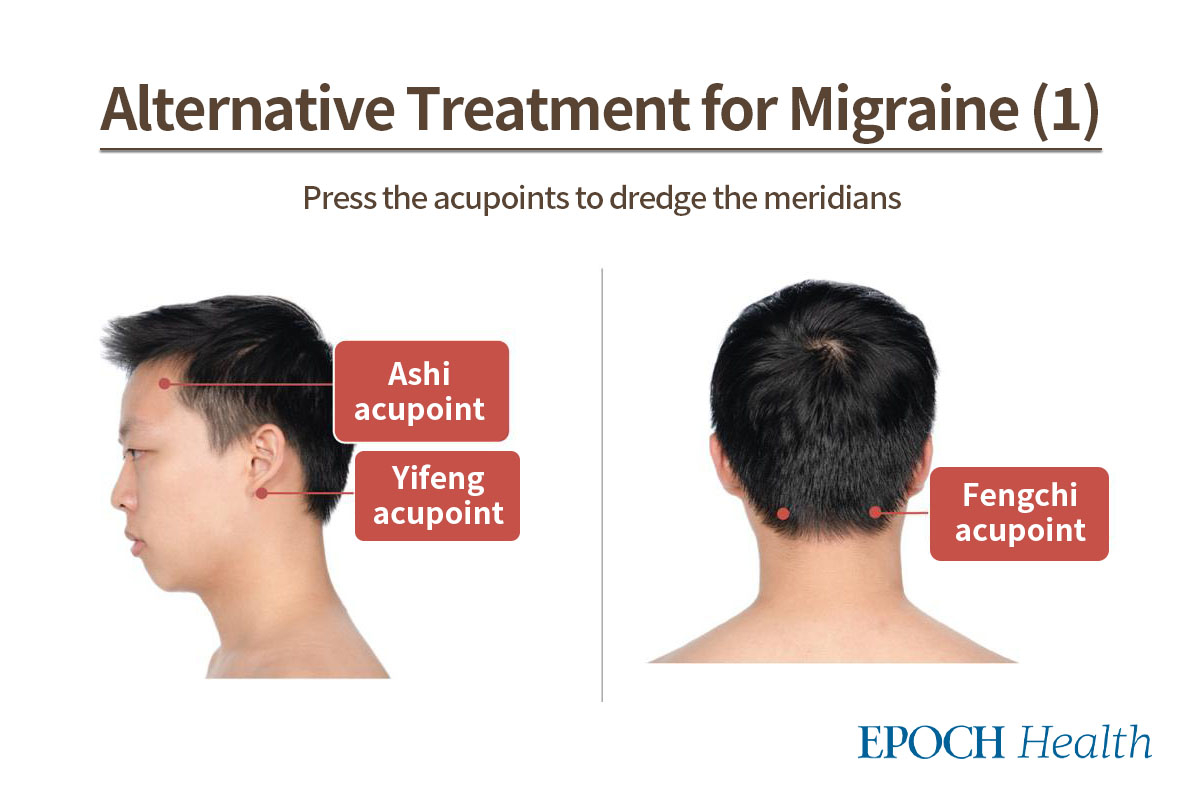
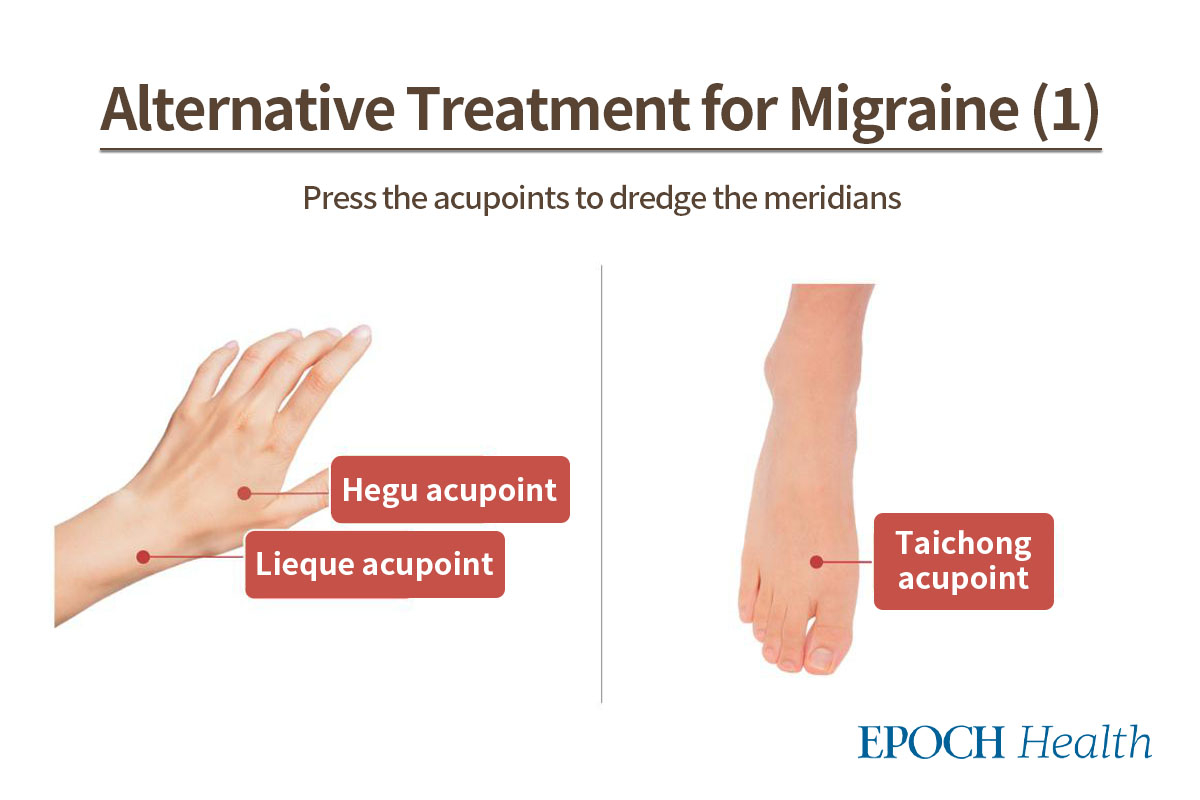
2. Massage acupoints with wind-dispelling medicated oil
Migraines are mostly caused by dampness and coldness invading the body. When massaging, you can add a little pain-relieving medicated oil or balms that contain wind-dispelling ingredients such as Tiger Balm or Fengyou essence. Massaging acupoints and muscles with these oils will give additional positive effects.
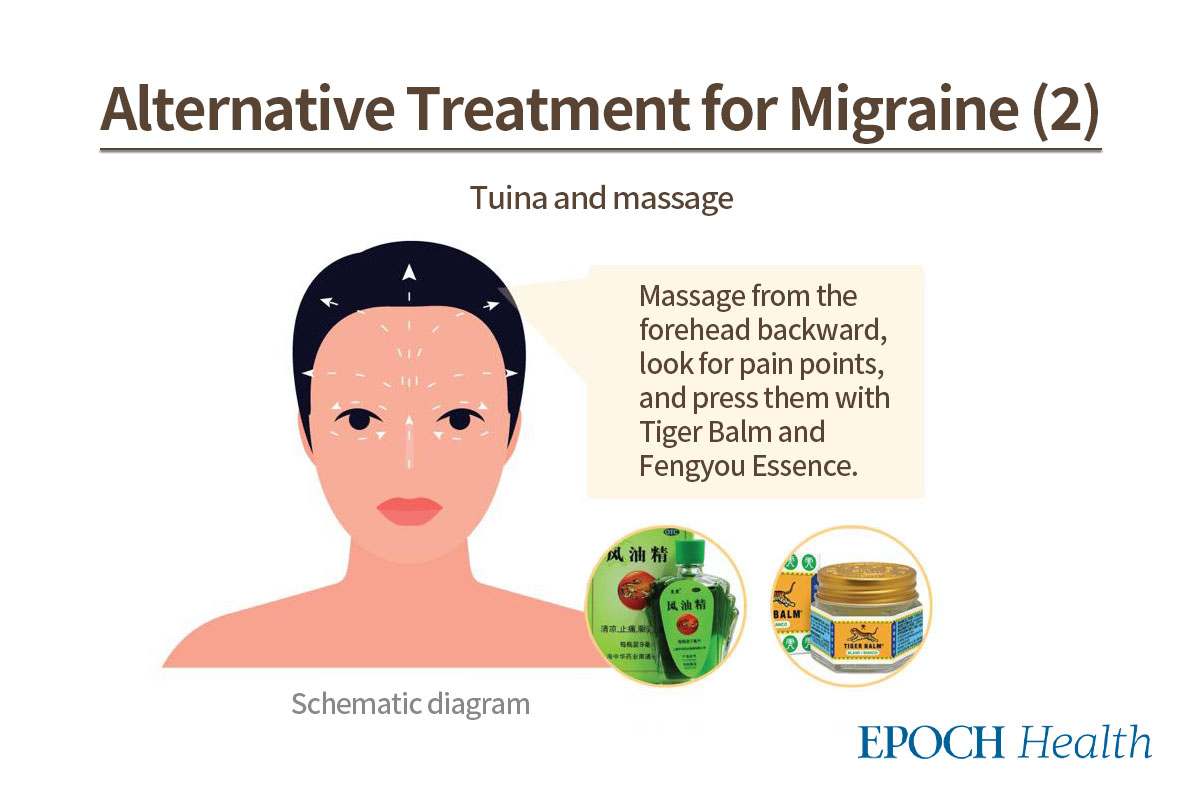
3. Get plentiful sleep
Shu says that plentiful sleep is a natural panacea for migraines. TCM holds that “while lying down, the blood returns to the liver,” which means that more blood will find its way to the liver when lying down. When one sleeps, more blood flows into the liver to nourish it, making it run smoothly and transporting energy and nutrients to the head. Conversely, with more blood purified by the liver, the clean blood produced is less likely to cause blood stasis in the head.
Modern medicine has similar proofs. An article published in the National Institutes of Health in April 2021 notes that the human body uses sleep to repair everything from blood vessels to the immune system.
4. Take a hot shower
Migraines caused by rheumatism can be relieved by promoting blood circulation by taking a hot shower.
Shu reminds us that attention to daily habits is also merited. To reduce the chance of qi and blood being weakened try to avoid:
- Foods that trigger migraines such as cheese, egg, and alcohol.
- Overworking.
- Loud noises and bright lights.
- Negative emotions.


